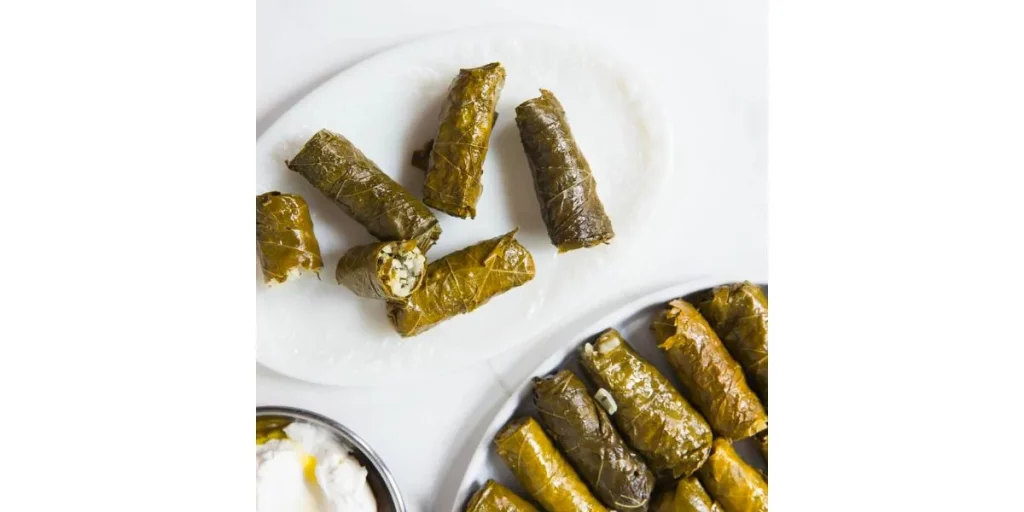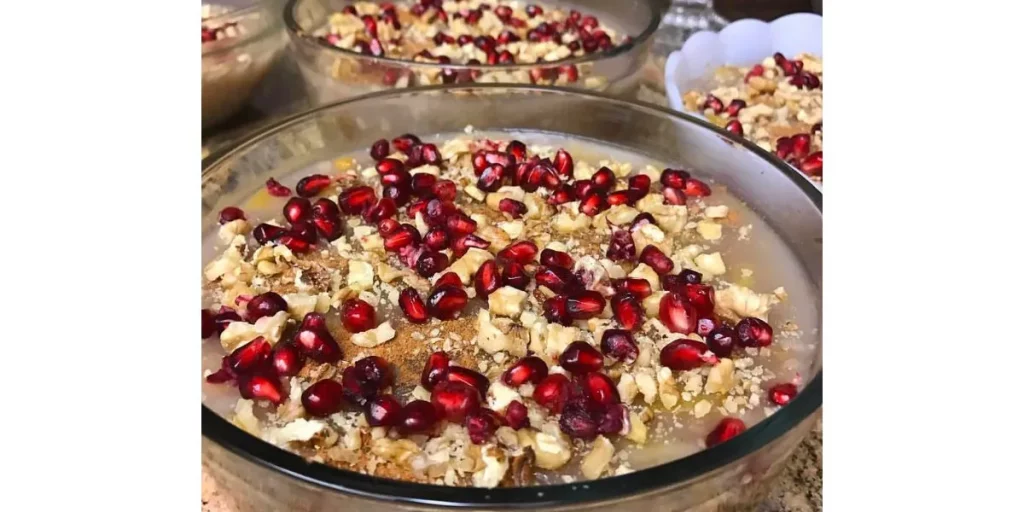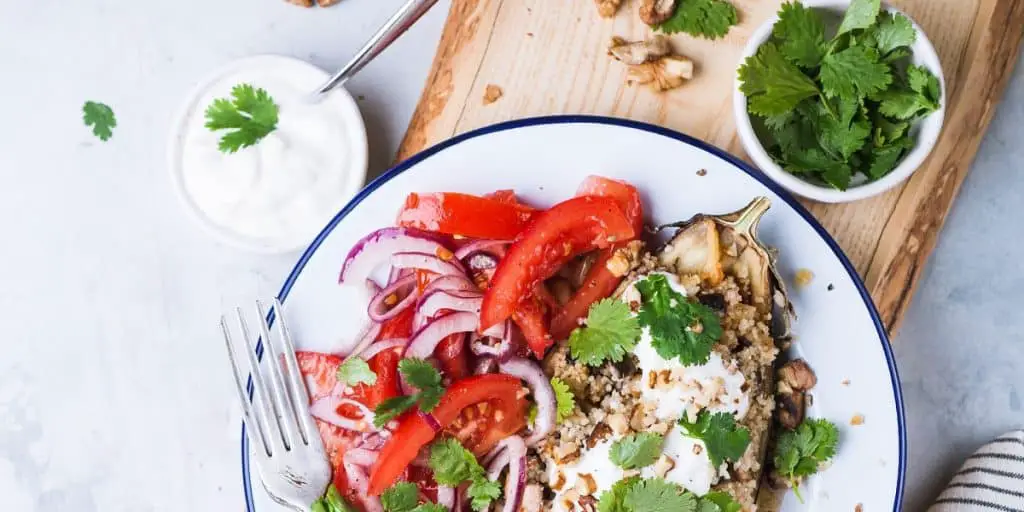Armenia has unique culinary traditions that extend to the observance of Lent. The more traditional Armenian people give high importance to Lent viewing this tradition as a period of reflection, purification, and spiritual renewal. During this time, Armenians keep to a plant-based diet abstaining from animal products. These days, however, many people don’t follow the rules as strictly. For some, it’s more of a fun family tradition that is to be taken not too “religiously”.
In this blog post, I will embark on a flavorful journey to look at what Armenians eat during Lent. I will talk about the type of dishes we eat and the specifics of Lent dishes in different Armenian communities around the world. If you want to share a recipe or just tell me what you think about the topic please ping me on Twitter or Instagram with #ArmeniaTravelTips.
Before we move on, let me recapture the Armenian Lent culinary tradition shortly:
Armenian Lenten cuisine offers mainly plant-based dishes abstaining from animal products. Some of the most typical Armenian Lenten dishes are Pasus tolma, Tabbouleh, Anoush apour, and others. A variety of fruit, lentils, and other legumes are used abundantly in these dishes.

Traditional Armenian Lenten Dishes
Abstaining from meat and dairy products may not seem so attractive to food enthusiasts. However, Lenten dishes can be as good as those served on regular days. Armenian Lenten dishes are not only healthy but also delicious. Let’s have a look at some of them.
Pasus tolma
You may have heard of tolma made of beef and rice rolled in grape leaves. Pasus tolma is similar, but it does not have meat in it, and it is stuffed in pickled cabbage leaves. Pasus tolma is served not only during Lent but also during the New Year and other regular days. It’s a very common dish in Armenian cuisine.
It takes about 2 hours to cook Pasus tolma. Basically, it is made of beans, lentils, bulgur, and peas with lots of spices and parsley. Beans, lentils, and peas are semi-cooked first. Once they are almost ready, all the ingredients are mixed together with bulgur, spices, onion, and oil. Then you roll them into cabbage leaves and cook those wraps on slow fire. Check the video below if you want to see the cooking process step by step.
Stuffed grape leaves
Typically, Armenians make tolma with grape leaves. This variety is more widespread in the region than the one with cabbage leaves, and in Armenian cuisine in particular tolma is very present. However, ordinary tolma is not served during Lent. During Lent, we make the grape leaves dolma without meat. It includes rice, onion, vegetable oil, tomato paste, and simple seasonings like red and black pepper. Some Armenians add chickpea, lentils, beans or bulgur to their Lenten grape leaves tolma as well.
Just like with the regular tolma, the process of wrapping the grape leaves requires patience and precision. Each grape leaf is laid out and a spoon of filling is placed near the stem. The leaf is then folded to create a package. The rolling technique is different in various regions. Some prefer cigar-shaped rolls while others do it in a thicker shape.

Tabbouleh
Tabbouleh is a staple salad in many countries in the Middle East. It may be hard to say where it originated (I think it’s Lebanese) but what I know for sure is that it is widely popular in Armenia. Here, just like tolma, it’s an everyday dish, but it’s particularly relevant for Lent, as it doesn’t contain any meat or animal products.
The main ingredient is bulgur which is basically cracked wheat. Bulgur adds a nutty and slightly chewy texture to this salad. It is accompanied by fresh herbs, such as parsley, mint, and cilantro. These herbs give a refreshing touch to tabbouleh. In addition to this, you add tomatoes, green onion, lemon juice, and olive oil. I love when they also add a good portion of tomato paste into it as well. Very yummy! Try it when in Armenia!

Anoush apour
Anoush apour, or sweet soup in English, is a delightful dish that observers can enjoy during Lent. This simple, healthy, and delicious soup or sweet pudding is one of the pearls of Lentan Armenian cuisine. It is made of pearled wheat, hot water, dried fruits like apricots, raisins, plums, figs, or anything at hand, and chopped walnuts. Anoush apour is served not only during Lent but also Christmas and on the New Years Eve, especially among the Western Armenian communities. The symbolism of this dish is thought to be in reminding us about the sweet days full of fresh fruit and abundance coming after winter.

Pakhlava
When it comes to mouthwatering desserts, pakhlava holds a special place in the Armenian Lenten cuisine. It has flaky layers, filling from walnuts or almonds covered with fragrant syrup. Its name is derived from the Persian word “pakhla” which means “many layers”.
You have certainly seen pakhlava or baklava in many other middle eastern cuisines, or even in Greece. But here in Armenia it’s one of the most favorite desserts, and the difference is that unlike Greeks we don’t use honey while making it, but rather a special sweet syrup.
Crafting Armenian pakhlava requires patience, skills, and a deep appreciation for the art of pastry making. Bakers put many layers one on another brushing each one with melted butter to achieve a balance of crispness and tenderness. In between the layers, the filling is put and the pastry is baked to golden perfection. Never miss Armenian pakhlava while in Armenia, especially if you observe Lent!

Lenten traditions and dishes specific to certain Armenian communities
Certain Armenian communities have specific dishes that they eat for Lent. Some of them also have different traditions they observe. A lot of it comes down to which branch of the Armenian church the local community finds closer to their hearts. Traditionally the eastern branch of the church is stricter when it comes to the selection of food that’s acceptable for Lent.
For example, in Lebanon, it is accepted to eat fish while in Armenia fish is also considered a “meat” product. Armenians in Syria, Lebanon, and Iran largely follow the traditions that are specific to their region.
For example, Lent in Beirut is a special event. It is time to delve into the culinary treasures of the Armenian community. From bahki kufteh and potato spinach pakhlava to Oil Sarma. Hummus, Mutabal, Fatush, Labne, and Red Plaf – all showcase a harmonious blend of flavors and textures.
Syrian Armenians love to eat harrisa made of cracked wheat and lentils. Normally, harissa is made of wheat and chicken but because observers refrain from meat, Lenten harissa is made of wheat and lentils. The Syrian Armenian pakhlava is especially yummy. This traditional Armenian pastry takes on a special Lenten twist in Syria. Syrian Armenians also stew vegetables flavored with herbs and spices.
Armenians in Iran also hold their Lenten traditions close to their hearts. The culinary dishes are deeply rooted in their cultural heritage. Like in all Armenian communities, pakhlava is a favorite sweet. They also eat vegetable stews, lentil soups, and rice dolma.

Significance of Lent in the Armenian Apostolic Church
Great Lent or Mets Pas is a deeply revered and integral part of the Armenian Apostolic Church. It starts 40 days before Easter and has a significant meaning for the Armenian faithful. It is a time when believers ponder their lives and seek forgiveness. The Great Pas aims to bring Armenians closer to God with prayer and fasting.
Those who observe Mets Pas abstain from certain foods, including meat and dairy products. The purpose is to cultivate self-discipline, purify the body and seek deeper spiritual growth. Believers are encouraged to revive their relationships with those they have had conflicts during the year. They also engage in charity and reflect upon their past life.
On the last day before Easter, most of those who observe Mets Pas abstain from any food until the Great Mass that the Armenian Apostolic Church serves on the eve before Easter. During Lent, the Armenian Apostolic Church also holds various events and rituals that foster a sense of belonging and communal worship.
If you think of it, the tradition actually makes a lot of practical sense. Historically, Armenian communities didn’t have the resources we have today, they didn’t have access to fresh fruit and meat during winter. So, it’s logical that foods containing dried fruit would be promoted in these cold months. Also abstaining from meat feels much more reasonable when you think it’s for religious reasons, rather than when you simply can’t have it cause there is none available.
Wrapping up
In the traditional Armenian culture, Lent is not the time only to abstain from animal products. It is not only about eating and discipline. It’s the time to contemplate your life and your relationships. If you are in Armenia and you happen to observe Lent, there are a number of restaurants where you can find Lenten food. They prepare Lenten food just during the period before Easter. There are also Armenian restaurants that prepare vegetarian food. And if you are an enthusiast of healthy food in general, check my blog post on where to eat healthy food in Yerevan. Many of these dishes are perfectly fit for the Lenten period. And don’t forget to ping me on Twitter or Instagram with #ArmeniaTravelTips.
Featured image credit: eat kubba on Pexels
Please help me make Armenia more popular!





